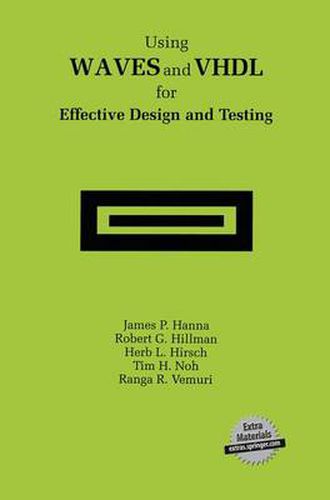Readings Newsletter
Become a Readings Member to make your shopping experience even easier.
Sign in or sign up for free!
You’re not far away from qualifying for FREE standard shipping within Australia
You’ve qualified for FREE standard shipping within Australia
The cart is loading…






This title is printed to order. This book may have been self-published. If so, we cannot guarantee the quality of the content. In the main most books will have gone through the editing process however some may not. We therefore suggest that you be aware of this before ordering this book. If in doubt check either the author or publisher’s details as we are unable to accept any returns unless they are faulty. Please contact us if you have any questions.
2 Concept ( Tools * Specification ( Tools + Design Stages ( Tools * Implementation ( Tools Figure 1-1. A nominal, multi-stage development process From that beginning, we have progressed to the point where the EDA community at large, including both users and developers of the tools, are interested in more unified environments. Here, the notion is that the tools used at the various stages in the development process need to be able to complement each other, and to communicate with one another efficiently using effective file exchange capabilities. Furthermore, the idea of capturing all the tool support needed for an EDA development into a unified support environment is now becoming a reality. This reality is evidenced by some of the EDA suites we now see emerging, wherein several tool functions are integrated under a common graphical user interface (GUI), with supporting file exchange and libraries to enable all tool functions to operate effectively and synergistically. This concept, which we illustrate in Figure 1- 2, is the true future ofEDA.
$9.00 standard shipping within Australia
FREE standard shipping within Australia for orders over $100.00
Express & International shipping calculated at checkout
This title is printed to order. This book may have been self-published. If so, we cannot guarantee the quality of the content. In the main most books will have gone through the editing process however some may not. We therefore suggest that you be aware of this before ordering this book. If in doubt check either the author or publisher’s details as we are unable to accept any returns unless they are faulty. Please contact us if you have any questions.
2 Concept ( Tools * Specification ( Tools + Design Stages ( Tools * Implementation ( Tools Figure 1-1. A nominal, multi-stage development process From that beginning, we have progressed to the point where the EDA community at large, including both users and developers of the tools, are interested in more unified environments. Here, the notion is that the tools used at the various stages in the development process need to be able to complement each other, and to communicate with one another efficiently using effective file exchange capabilities. Furthermore, the idea of capturing all the tool support needed for an EDA development into a unified support environment is now becoming a reality. This reality is evidenced by some of the EDA suites we now see emerging, wherein several tool functions are integrated under a common graphical user interface (GUI), with supporting file exchange and libraries to enable all tool functions to operate effectively and synergistically. This concept, which we illustrate in Figure 1- 2, is the true future ofEDA.